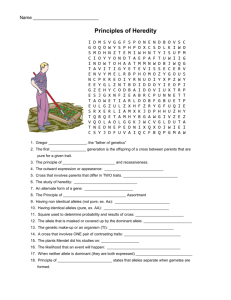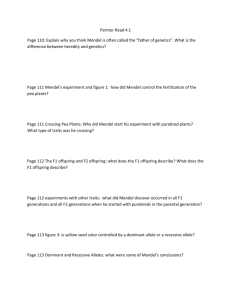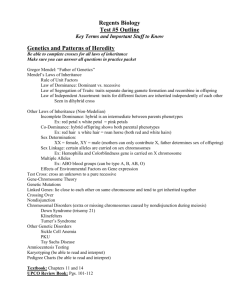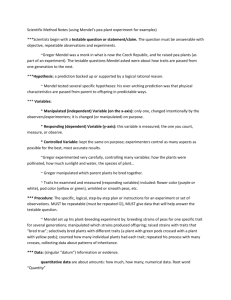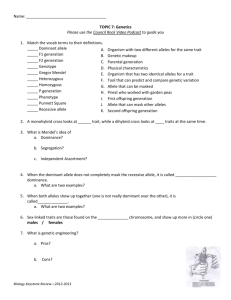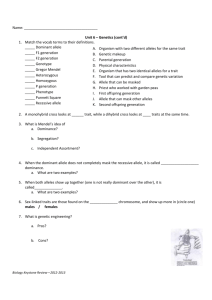PowerPoint Notes 11-1
advertisement
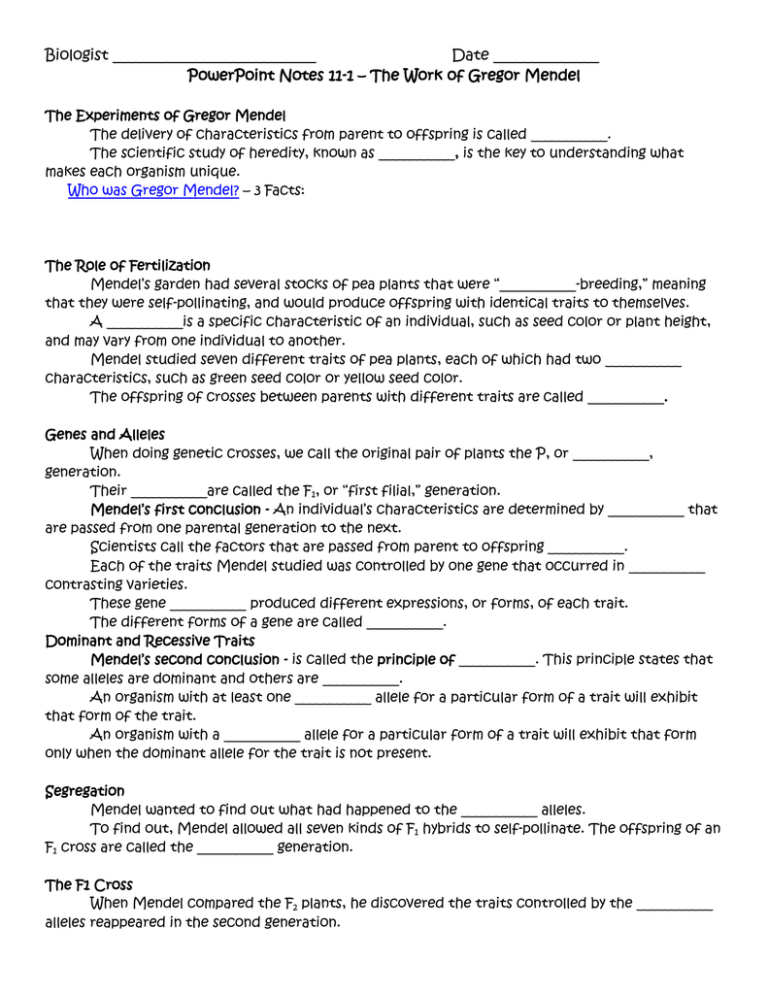
Biologist ___________________________ Date ______________ PowerPoint Notes 11-1 – The Work of Gregor Mendel The Experiments of Gregor Mendel The delivery of characteristics from parent to offspring is called ___________. The scientific study of heredity, known as ___________, is the key to understanding what makes each organism unique. Who was Gregor Mendel? – 3 Facts: The Role of Fertilization Mendel’s garden had several stocks of pea plants that were “___________-breeding,” meaning that they were self-pollinating, and would produce offspring with identical traits to themselves. A ___________is a specific characteristic of an individual, such as seed color or plant height, and may vary from one individual to another. Mendel studied seven different traits of pea plants, each of which had two ___________ characteristics, such as green seed color or yellow seed color. The offspring of crosses between parents with different traits are called ___________. Genes and Alleles When doing genetic crosses, we call the original pair of plants the P, or ___________, generation. Their ___________are called the F1, or “first filial,” generation. Mendel’s first conclusion - An individual’s characteristics are determined by ___________ that are passed from one parental generation to the next. Scientists call the factors that are passed from parent to offspring ___________. Each of the traits Mendel studied was controlled by one gene that occurred in ___________ contrasting varieties. These gene ___________ produced different expressions, or forms, of each trait. The different forms of a gene are called ___________. Dominant and Recessive Traits Mendel’s second conclusion - is called the principle of ___________. This principle states that some alleles are dominant and others are ___________. An organism with at least one ___________ allele for a particular form of a trait will exhibit that form of the trait. An organism with a ___________ allele for a particular form of a trait will exhibit that form only when the dominant allele for the trait is not present. Segregation Mendel wanted to find out what had happened to the ___________ alleles. To find out, Mendel allowed all seven kinds of F1 hybrids to self-pollinate. The offspring of an F1 cross are called the ___________ generation. The F1 Cross When Mendel compared the F2 plants, he discovered the traits controlled by the ___________ alleles reappeared in the second generation. Roughly one ___________ of the F2 plants showed the trait controlled by the recessive allele. Explaining the F1 Cross How did this separation, or ___________, of alleles occur? Mendel suggested that the alleles for tallness and shortness in the F1 plants must have segregated from each other during the formation of the sex cells, or ___________. The Formation of Gametes Whenever each of two ___________ carried the t allele and then paired with the other gamete to produce an F2 plant, that plant was short. Every time one or more gametes carried the T allele and paired together, they produced a tall plant. The F2 generation had ___________ combinations of alleles.

